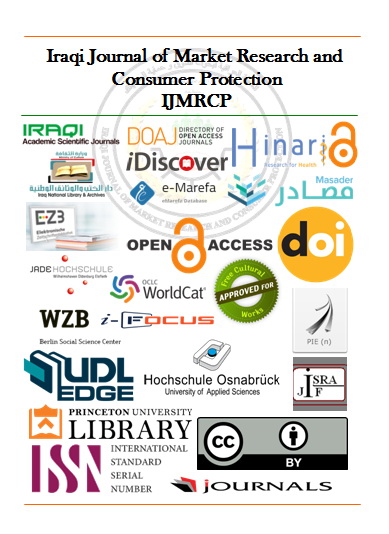SYNTHESIS AND DETERMINATION OF CALCIUM ION-IMPRINTED POLYMERIC AND ITS APPLICATION IN SERUM SAMPLE
SYNTHESIS AND DETERMINATION OF CALCIUM ION-IMPRINTED POLYMERIC AND ITS APPLICATION IN SERUM SAMPLE
DOI:
https://doi.org/10.28936/10.28936/(1)jmracpc11.2.2019Keywords:
Molecularly imprinted polymer; calcium ion, styrene, monomersAbstract
This study was aimed to synthesis new molecular imprinted polymers from different monomers which useful for determination of calcium ion in different serum samples. Calcium ion play an important role in blood clotting and bone mineralization. In plasma, 40 percent of circulating calcium is bound to proteins, 10 percent is in the form of inorganic complexes, and 50 percent is present as free (ionized) calcium. In this study, Blood samples were taken from patients with type 2 diabetes from Kadhimiya Hospital in order to determine the concentration of calcium ions in the blood, enter it into the column, and then calculate the final concentration in order to know the amount of dose taken by the patient. To acquire the highest adsorption capacity, molar ratios of the template, monomer, and cross-linking agent, as well as solvents and multiple monomers were investigated. Scanning Electron Microscopy (SEM) and Fourier Transform Infrared Spectroscopy (FTIR) were used to analyze the calcium ion polymer. The elution of calcium has a small effect on the surfaces of the three-dimensional network structure. Calcium (II) ions were successfully eluted using a mixture of methanol and acetic acid. The calcium absorption capacities were7.989 µmol/g and 8.250 µmol/g (Qmax), respectively. Solid-phase extraction (SPE) syringes packed with ionic imprinted polymers (IIPs) were used to selectively separate and preconcentration the calcium (II) ion from serum to determine the calcium ion by flame atomic absorption spectroscopy (FAAS). Through the results obtained and compared to the atomic absorption device, which is considered the most accurate and sensitive device for the elements, there is no difference in the results, and because the atomic absorption device test is expensive and needs electricity all the time, we can use the molecular printing technique to separate, assign, and concentrate the elements.
Downloads
Published
Issue
Section
License
Copyright (c) 2024 Iraqi Journal of Market Research and Consumer Protection

This work is licensed under a Creative Commons Attribution 4.0 International License.





